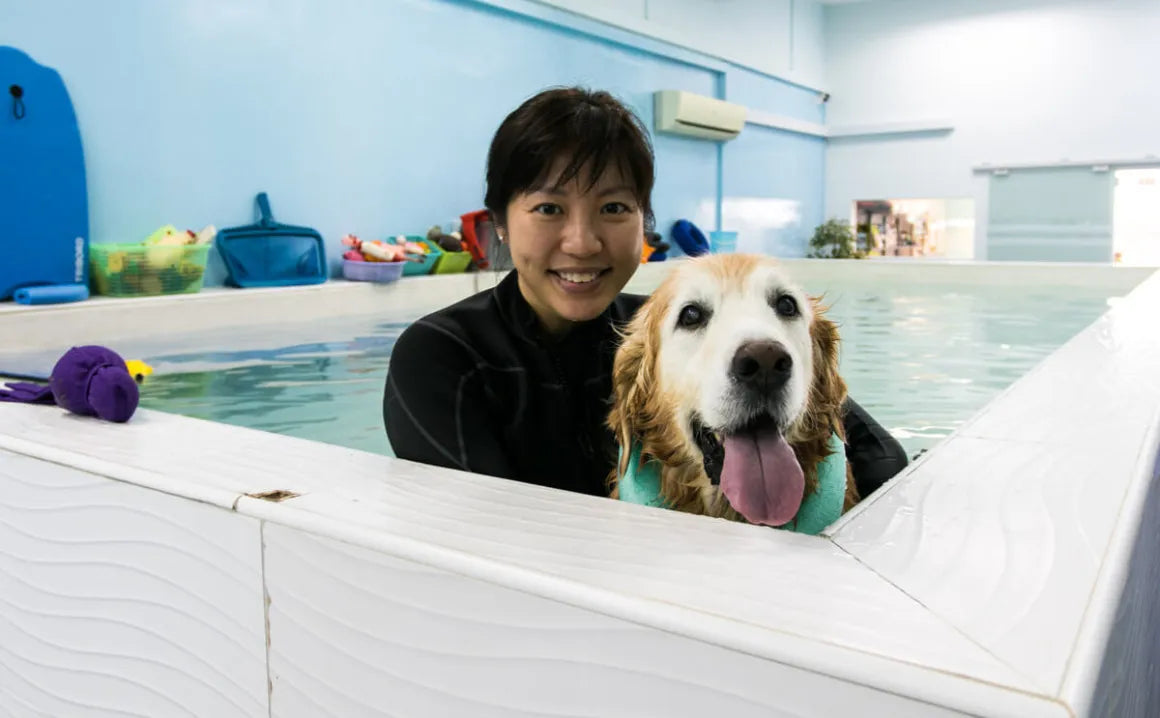Just got your first dog and haven't started on training? Don't panic!
Teaching your dog basic commands is crucial for her well-being and discipline. Basic dog obedience training would ensure that your dog knows how to "sit", "stay", and "down". It would also include brief recall and heel training. But the reliability of these dog commands depends a lot on whether the owner knows their importance and continues the training.
Unfortunately, like me, many dog owners don't follow through on command training. And it gets increasingly harder to do so as your dog ages.
If I were to start all over again, I would put in more effort to teach the basic dog commands, including those beyond "sit", "down", and "stay".
Here are 7 less common dog commands you should teach your dog and why
1. "Watch me"
Being able to get your dog's attention is one of the first things you should accomplish in obedience training. Your dog needs to know that whenever she looks at you, good things happen. This is part of forming trust and a strong bond between the two of you.
Start by training her to do this in a calm, familiar environment, and then progressing to more interesting surroundings.
-
Prepare many small treats
-
Sit down or place your dog on a table so that she's at around the same height as you
-
Show her a treat, let her sniff it and say "watch me" as you move your hand up to your face
-
Once she's looking at your face, praise and give her the treat
-
Repeat steps 1 to 4 until your dog immediately looks at you when you say "watch me"
-
As your dog gets better at it, slowly increase the distractions around both of you
You can replace "watch me" with your dog's name if she already tends to look at you when you call her.
2. "Come"
Training your dog's recall can help keep him safe from trouble and danger. If your dog can reliably come back to you when called, you won't have to worry about her running away or getting into harm's way.
Here are the five rules of recall training to take note of.

3. "Leave it"
Most dogs love to sniff the lamp posts and pick things up on the ground while on walks. While it is normal for dogs to do so, there are instances when dogs pick up stuff that is undesirable or harmful, such as food litter and wild mushrooms.
If that happens, instead of frantically pulling your dog away or digging yucky stuff from their mouth, you can simply say "leave it".
Here's how to train your dog to "leave it":
-
Put a treat in each of your hands and close them
-
Show your dog one of your fists and say “Leave it”
-
She will try her best to get it by licking, sniffing, pawing, etc. and you will ignore her
-
Once she stops, give her the treat in your other fist
-
Repeat steps 1 to 4 until your dog moves away from your fist when you say, “leave it”
-
Once your dog reliably does step five, it's time to increase the difficulty. Give your dog the treat only when she moves away from your fist and also looks at you
4. "Touch"
"Touch" is a command to get your dog to touch her nose to your hand. It is a useful foundation for some more advanced behaviors and gives you a way to capture your dog's attention and direct his movements.
Dog trainer Kristina Dieta Setiabudi from Puppy Colours tells us how to train a dog to "touch":
-
Cut up a large number of small treats
-
Present your hand a couple of inches away from your dog's face. Praise and treat for any interest he shows, whether an actual touch of his nose on your hand or just looking at your hand. After the first few times, reward only for a full nose touch
-
Repeat this until your dog reliably touches your hand
-
Now, add the verbal command. Before presenting your hand, say "touch" and then put your hand down. Be sure to pause for a second between the command and reaching down.
-
When your dog responds reliably to the verbal command, begin to increase the distance between your dog's head and your hand by a few inches
-
Keep increasing the distance a little by a little. Also, move your hand to different positions (e.g. higher, lower, and toward the side of your dog's head) - and try the exercise in different rooms of the house
5. "Heel"
According to dog behaviourist Barbara Wright, heel walking is like ballroom dancing. The dog is close to the handler, about 10 to 20cm away, traditionally on the left-hand side. Her shoulder matches the position of the handler’s leg.
With each step, she moves along with the handler, never going ahead. She also regularly checks in by looking towards the handler’s face. Because of the closeness, a leash is not required. When you give the "heel" command, your dog will come to your side and walk at heel position until released.
The heel command is very useful for short periods of time while walking through a crowd, walking past another dog, or in any situation when you require complete control of your dog.
Here's how to teach your dog to "heel".

6. "Place"
Do you love bringing your dog out cafe hopping but can't get her to sit still? Or do you want your dog to settle down when there are visitors in the house or food at the table? A "place" command will come in useful.
Telling your dog to go to "place" is to tell her to lie down on a specific place like a mat or a bed.
Here's how to teach your dog to go to "place".
7. "Okay!"
This command helps your dog know when she is released from a previous command, such as "heel" and "stay". You can use a high-pitched happy tone to say "okay!' or "done!" to let your dog know when she has completed a command. If your dog doesn't get it at first, use hand gestures or a pull on the leash to get her out of the position.
Remember, you can change the name of the commands to something you are comfortable with. You can ask your dog to come back by saying "eggplant" for all you like but what's important is that you use the same word consistently.
Say the command once and don't keep repeating it as it only teaches your dog to ignore it. A tainted command is less effective as it confuses your dog.
Also, do not set your dog up to fail. Always start easy indoors with minimal distraction. Don't expect your dog to run before she can walk! Patience is key.
What other dog commands do you think are important and how did you teach them? Share with us by commenting below!
Featured photo by Antoni Shkraba



